Montana is home to a diverse range of fox species, each with their own unique characteristics and habitats. In this article, we will explore the different types of foxes found in Montana and where they can be found throughout the state. From the elusive swift fox to the adaptable red fox, Montana’s fox population offers an intriguing glimpse into the natural world. Whether you’re a wildlife enthusiast or simply curious about these fascinating creatures, read on to discover more about foxes in Montana.
2 Types of Foxes in Montana
Montana has both red foxes (Vulpes vulpes) and swift foxes Vulpes velox). Red foxes are native to the entire state of Montana. Swift foxes can be found in Central and Eastern Montana but not in most Western counties.
Red Fox

Red foxes are the most common fox in Montana.
©iStock.com/Ondrej Prosicky
Red foxes are medium-sized mammals, typically weighing between 7 and 15 pounds. They have a distinctive red coat that is thick and fluffy, with white fur on their underbelly, chin, throat, and the tip of their tail. Their legs are slender but powerful, allowing them to run at speeds up to 45 miles per hour. Red foxes also have sharp claws that help them climb trees or dig burrows in the ground.
Their head features pointed ears that can rotate up to 180 degrees for excellent hearing capabilities. The eyes of a red fox are almond-shaped and range in color from amber to brownish-yellow. Their nose is black and moist, which helps them pick up scents easily.
Overall, the appearance of a red fox has been described as elegant due to its slim body shape coupled with its bright reddish-orange coat, making it one of Montana’s most beautiful species.
Swift Fox
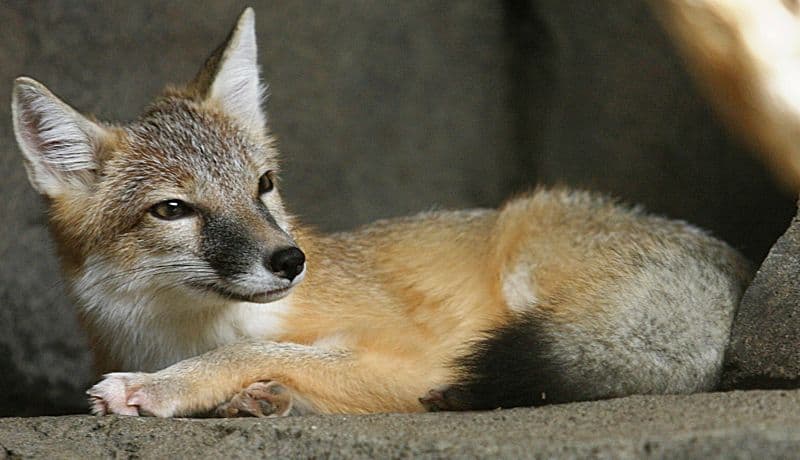
Swift foxes are native to Montana.
©Cburnett, CC BY-SA 3.0, via Wikimedia Commons – License
The swift fox, known for its speed and agility, is a small-sized fox that weighs around 3-6 pounds and measures about 12-16 inches long. It has short legs, large ears, and a slender body with rusty-yellow to gray fur on top and white underparts. The swift fox’s tail is bushy with a black tip, which distinguishes it from other species of North American foxes.
Their size may be deceiving as they are often mistaken for young kit or even juvenile coyotes due to their diminutive stature. However, their physical characteristics make them unique among the Canid family. Most notably, their extremely sharp senses, including excellent vision, allows them to see in low-light conditions up to three times better than humans.
Swift Foxes inhabit grasslands in plains regions of the western United States, including Montana, where they are found predominantly in prairies characterized by short-grass vegetation. Their adaptability makes them capable of living in various types of habitats, such as agricultural lands and urban areas, but adequate resources, such as prey bases, remain fundamental factors influencing population size.
Overall, the swift fox’s distinctive appearance, combined with its remarkable abilities, make it an intriguing animal worth studying for wildlife enthusiasts across the world.
Habitat
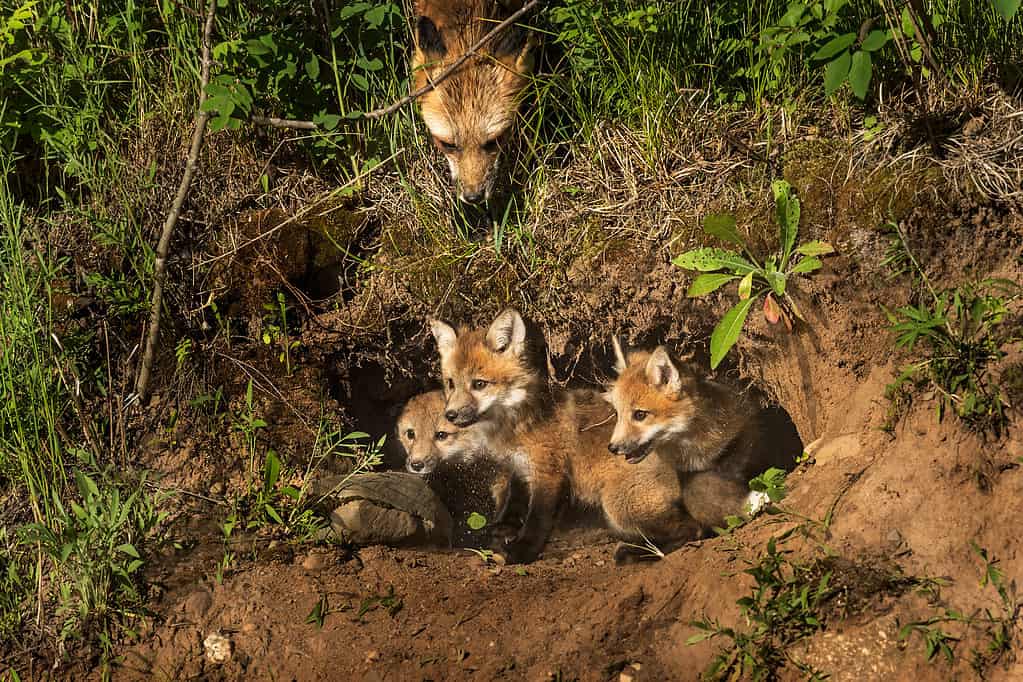
Foxes often burrow underground to keep their babies safe from predators.
©Geoffrey Kuchera/Shutterstock.com
Montana is home to a diverse range of fox habitats, including high mountain meadows and grassy lowlands. These social animals live in groups led by a dominant male and many females, making their homes across various forest types such as deciduous, coniferous, and mixed. In addition to these forests, foxes can also be found in scrublands and rangeland throughout the state.
To thrive in these different environments, foxes have adapted to seek out places of concealment for protection from predators or inclement weather. They often look for areas with tall shrubs or grasses that provide cover during the day when they are not actively hunting. Foxes may also make use of downed trees or rock dens as hiding spots.
Despite their adaptability to various habitats across Montana’s landscape, it’s important to remember that each species has specific requirements for food sources and shelter preferences. By understanding the unique characteristics of different types of foxes and where they live within this vast state, we can better appreciate these fascinating creatures’ role in maintaining ecological balance alongside other wildlife species.
Diet

Foxes are a highly adaptable species, with an incredibly varied and balanced diet that allows them to thrive in a wide range of ecosystems. They primarily subsist on small mammals such as voles, rabbits, and moles, but they also hunt birds, lizards, frogs, and fish. During the winter months, when prey is scarce, foxes will scavenge for carrion or seek out refuse sources to supplement their diets.
In addition to their carnivorous tendencies, foxes have been known to enjoy fruits and vegetables like apples or raspberries. These sweet treats can often be found near water sources or burrows where other small animals may congregate.
One of the most interesting aspects of a fox’s diet is its opportunistic nature; these clever creatures will quickly take advantage of any available food source they can find. Whether it’s raiding trash cans in suburban neighborhoods or feasting on insects and grubs in rural fields, foxes are always looking for ways to sustain themselves.
Despite their diverse palate, one thing remains true for all foxes: they require nutrient-rich prey that provides enough calories to maintain their metabolisms. This means that while they may be able to survive on a variety of foods in different environments, they still need access to high-quality prey if they want to thrive over the long term.
Coat
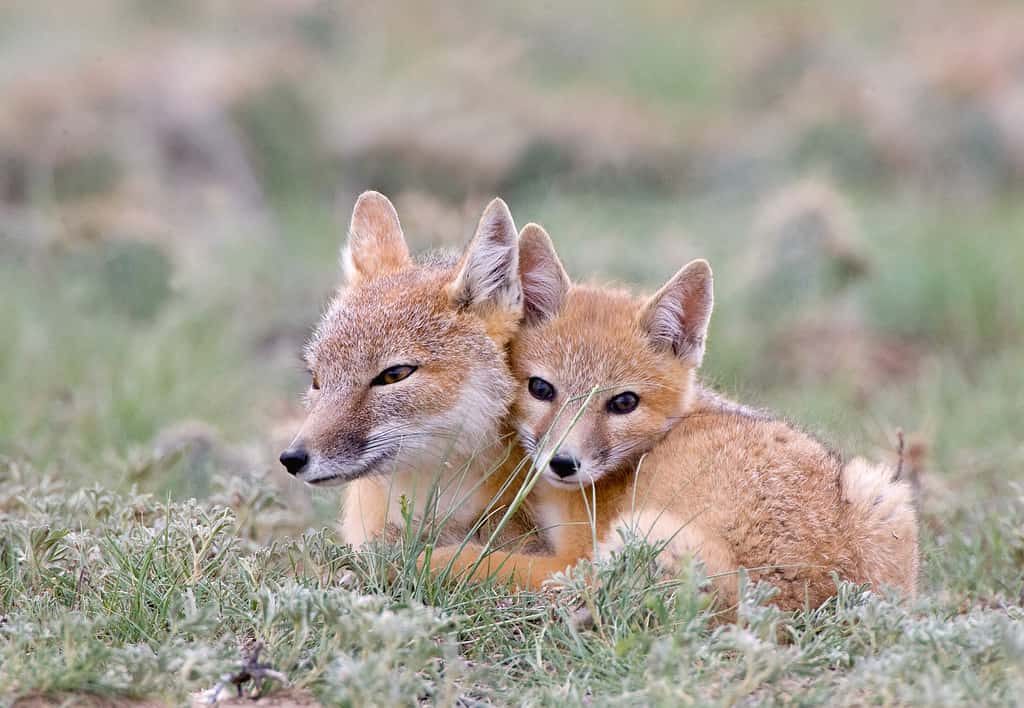
The swift fox population has significantly decreased due to habitat loss.
©Rob Palmer Photography/Shutterstock.com
The diversity of coat colors in Montana’s fox population is truly stunning. The red fox, one of the most commonly spotted species, boasts a range of golden hues that shimmer beautifully in the sunlight. In contrast, black and silver foxes possess darker shades that give them an air of mystery and intrigue. Additionally, swift foxes are often seen with coats that display a range of tones from light to dark.
What makes these already captivating animals even more fascinating is their ability to sport unique patterns on their fur. White markings can be found on some individuals, creating a striking contrast against their primary coat color. These patterns vary greatly between individuals and can include anything from small speckles to large patches.
Interestingly enough, while juvenile foxes tend to exhibit greater variation in coloration than adults, all members of the species retain their distinctive coloring year-round. As temperatures drop and winter approaches, subtle changes may occur as part of natural adaptation strategies for survival during harsher weather conditions.
Overall, Montana’s diverse array of fox coat colors serves as a testament to the beauty and complexity found within nature itself.
Predators
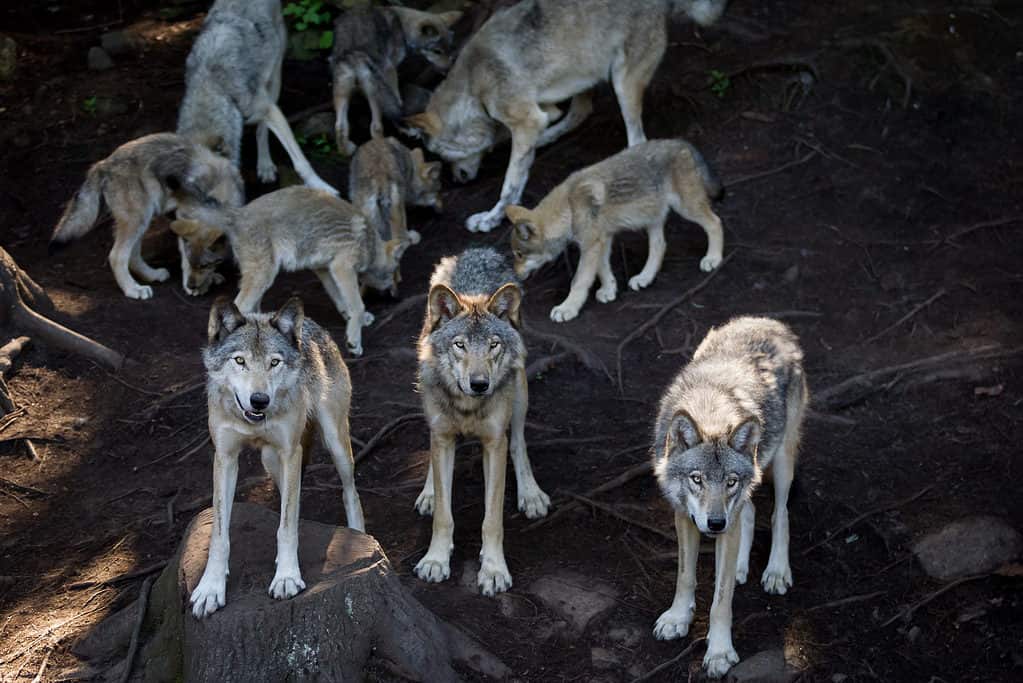
A pack of grey wolves (Canis Lupus) can surround and kill a fox.
©PatrickLauzon photographe/Shutterstock.com
Foxes are known for their remarkable hunting skills and resourcefulness in the wild. However, they are not invincible and can become vulnerable to a range of predators that inhabit their habitat. These include wolves, bobcats, bears, coyotes, cougars, and hawks, who pose significant threats to foxes.
In particular, lone or injured foxes may fall prey to these predators as they are easier targets. Wolves have been known to form packs when hunting larger prey, like foxes. This increases the chances of catching them even if they try to escape.
Furthermore, diseases that these predators spread in the environment can also be harmful to fox populations. Foxes that survive attacks from predators could still succumb to illnesses such as rabies or distemper.
Despite these challenges, foxes have adapted well over time by developing clever strategies for avoiding danger in their surroundings. For instance, some species of fox prefer living underground, where it is harder for larger animals like wolves or bears to reach them.
Overall, while being skilled hunters themselves with sharp senses and agility on their side, foxes must remain vigilant at all times against potential attackers lurking around every corner of their natural habitats!
Reproduction
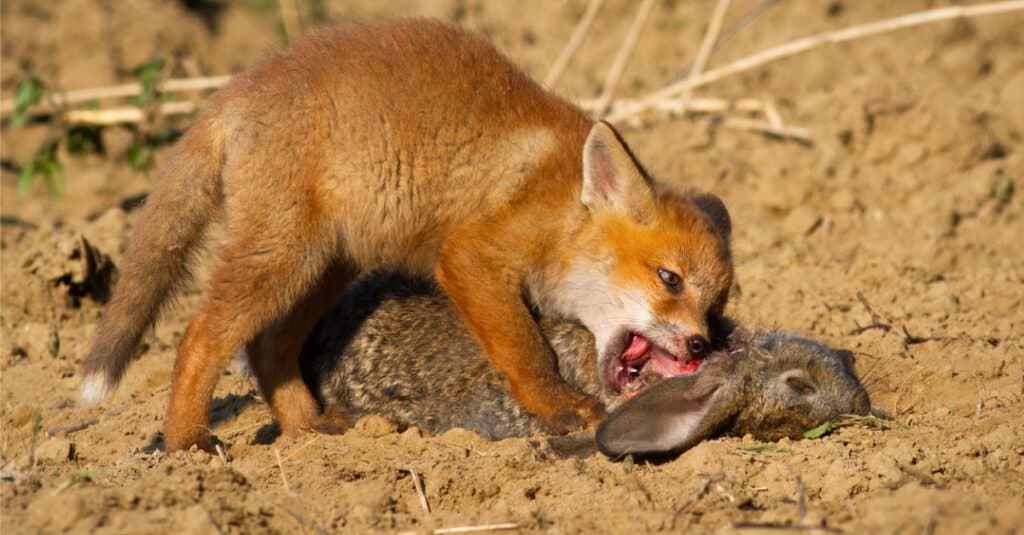
Foxes are only pregnant for 52 days.
©iStock.com/JMrocek
Foxes are known to be monogamous creatures, meaning that they mate for life. Their mating season usually begins in late fall or early winter after a period of courtship rituals. During this time, foxes engage in various behaviors, such as vocalizations and displays of affection towards their chosen mates.
One unique aspect of fox reproduction is the relatively short gestation period and litter size. After only 52 days, females give birth to litters of up to six pups. This rapid reproductive cycle ensures that fox populations remain stable across the state of Montana.
When it comes time to raise their young, fox parents take special care to ensure their families are safe and secure. They often go to great lengths to find den sites that will provide protection from predators and environmental hazards.
Overall, foxes’ ability to reproduce quickly helps maintain their population numbers throughout Montana’s varied ecosystems. By remaining monogamous and dedicating themselves to family life, these intelligent animals continue thriving even amidst changing landscapes and human encroachment on wild spaces.
The photo featured at the top of this post is © iStock.com/JMrocek
Thank you for reading! Have some feedback for us? Contact the AZ Animals editorial team.






